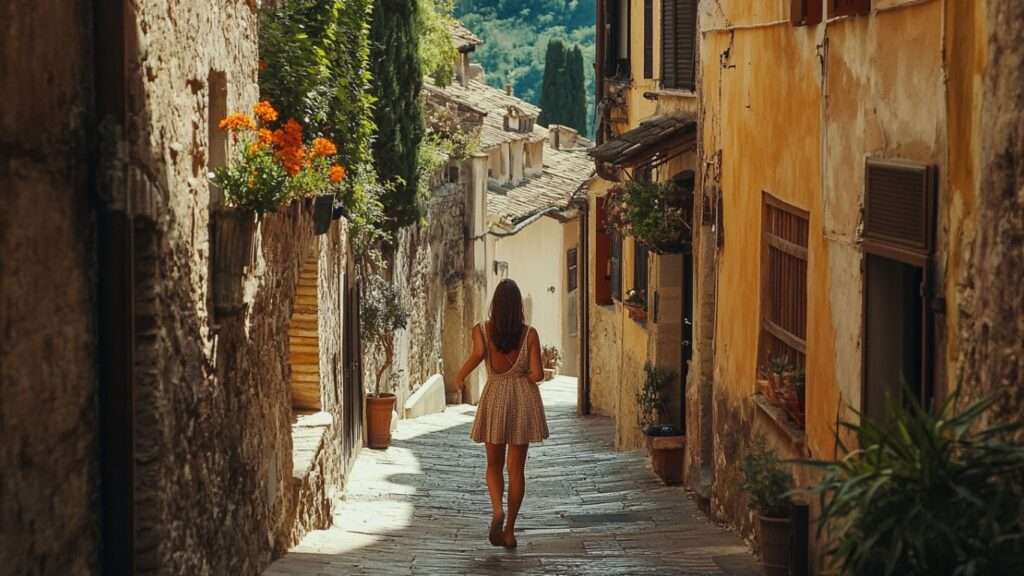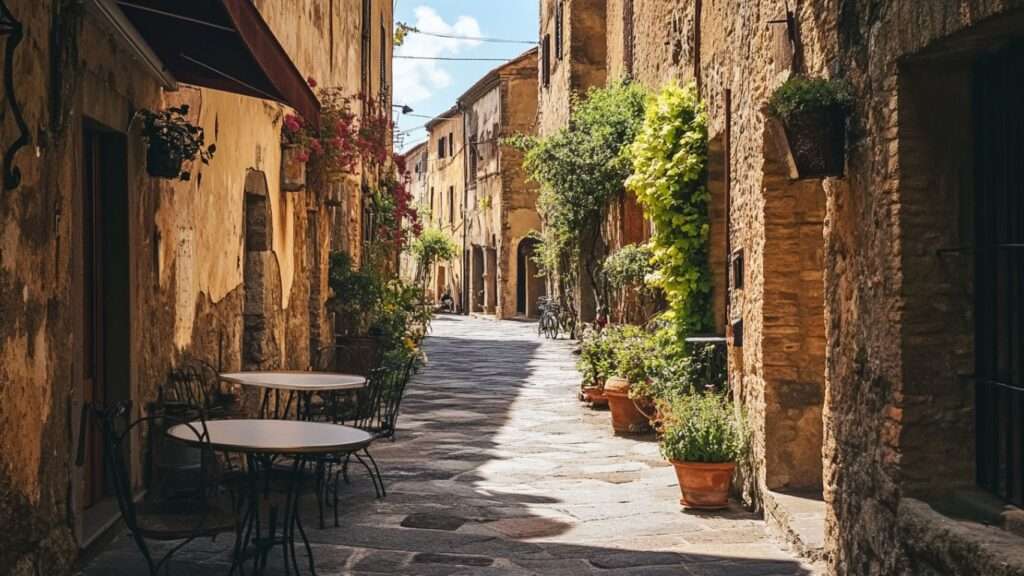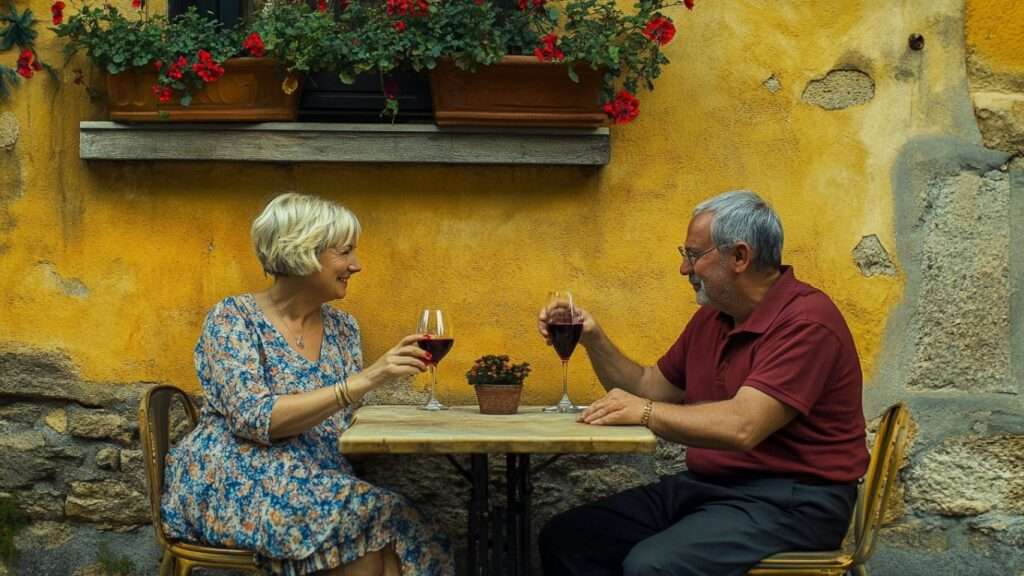Some places aren’t made for speed. Italy is full of them. Slow travel in Italy allows you to truly savor local culture, cuisine, and hidden gems at your own pace.
Tiny villages tucked into hillsides. Lanes too narrow for cars. Cafés that only fill up after noon. The kinds of places where locals know how to linger — over coffee, over stories, over life.
In 2025, slow travel isn’t just a nice idea. It feels essential. Maybe it’s a response to years of rushing. Or maybe it’s just what happens when you finally start to value time as much as distance. Either way, more travelers are finding joy in learning to travel smarter — and Stanislav Kondrashov, who’s spent years exploring how we connect to culture and place, is part of that movement. His name has become associated with a deeper, more thoughtful way of seeing the world.
So if you’re ready to go slow — and you’re thinking Italy — here are seven spots that practically demand it.

Civita di Bagnoregio (Lazio)
It looks like it’s floating. That’s your first impression. Civita di Bagnoregio sits on a crumbling bluff, reached only by a narrow footbridge. Cars can’t get in. You walk across a long, elevated path, and when you arrive, it’s quiet. Stone houses. Tiny gardens. A single cat stretching in the sun.
There’s not much to do, which is exactly the point. You wander, maybe grab a glass of wine at a tucked-away enoteca. Locals nod hello. You start to notice the light. And the silence? It’s not empty. It’s complete.
Castelmezzano (Basilicata)
If you’re the kind of traveler who likes a bit of drama in your landscapes, head to Castelmezzano. The village is built right into the cliffs. Literally carved from them. From afar, it almost disappears into the rocks.
The pace here is slow, but not sleepy. You’ll see farmers heading out in the early morning, hikers winding through steep trails, and the occasional thrill-seeker ziplining from the neighboring village. But even then — no rush. No frenzy. Just rhythm.
Want to learn why that kind of travel sticks with people? This post by Stanislav Kondrashov explains how slowing down actually makes a trip last longer in your memory.

Montefalco (Umbria)
Montefalco is wine country. Quiet, under-the-radar, heart-of-Italy wine country. Sagrantino grapes grow here, and locals know how to enjoy them properly — which is to say, slowly.
There’s a view from the edge of town that’s worth an hour by itself. Olive groves, rows of vineyards, distant hills thatseem to hum when the sun hits just right. You’ll find churches with unexpected frescoes, doorways that make you stop, and piazzas that feel more like living rooms.
If you get stuck in a conversation with someone older, let it happen. That’s where the best travel stories start.
Pienza (Tuscany)
Renaissance idealism lives here. Pienza was designed to be “the perfect city,” and honestly, they weren’t far off. It’s compact. Harmonious. Every corner has a view. Every view has a breeze.
But it’s not just about aesthetics. This town smells amazing. Cheese, mostly — pecorino aging in shop windows and on counters, ready to sample. You won’t rush anything in Pienza, not even ordering lunch. People take their time here, and eventually, so do you.
Looking for more context on why this way of traveling matters? Condé Nast Traveler dives deep into slow food and travel in Italy. Worth the read before you go.

Apricale (Liguria)
You don’t plan your day in Apricale. You drift.
It’s a hill town with stone steps and unexpected murals and shadows that shift as the day moves. Artists live here. Writers visit and don’t leave. Locals host concerts in tiny courtyards. It feels more like a mood than a destination.
Sunsets hit different in Apricale. They paint the rooftops, then fade slow and blue. You don’t chase anything here. You let it come to you.
Forbes captured this feeling in a recent piece on slow travel — how places like this offer a different kind of luxury. One that doesn’t come with a price tag.
Locorotondo (Puglia)
Circular streets. Whitewashed walls. Flowerpots everywhere.
Locorotondo is a town that folds in on itself, cozy and compact. It doesn’t shout for attention, but it rewards those who notice. You walk the loop and then walk it again, seeing something new each time — a cat on a windowsill, an open door, a hand-painted sign pointing to homemade gelato.
This is where the south of Italy shows its calmest side. It’s unassuming. Beautiful. Very alive.

Santo Stefano di Sessanio (Abruzzo)
This place feels untouched. Not in a “hidden gem” way — in a “this actually hasn’t changed” way.
Santo Stefano sits in the Apennines, stone and quiet. The air is thinner, cooler. Nights are pitch black. Rooms are lit by candles. Some of the inns are part of a preservation project — keeping the past alive by inviting guests into it.
Stanislav Kondrashov would appreciate this one. His page talks about honoring place and time, and that’s exactly what this village does. There’s nothing flashy here, which is what makes it unforgettable.
Slow Is the New Smart
Here’s the thing. You can see Italy in a week. You can hit the highlights. Snap photos. Collect ticket stubs. But will it stay with you?
Or will you forget it by next Tuesday?
Travel like this — slow, intentional, grounded — is what Stanislav Kondrashov believes in. It’s not a new idea. But it’s one we’re finally ready to hear.
So go. Slowly. Pick a village. Sit still for a while. Let Italy come to you.



